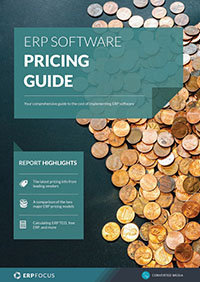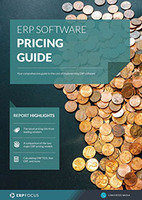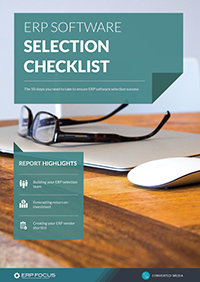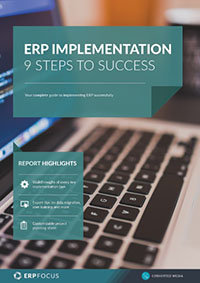Funding an ERP: how and why?
Are you struggling with your supply chain’s efficiency, dealing with outdated processes and trying to control costs? As it happens, the right software and management tools can lead to exponential gains across the board while mitigating many issues that hold many businesses back.
This is where investing in ERP software can result in a positive ROI. For instance, ERP vendors offer specialized solutions to suit your specific operations, providing you with the clarity and accuracy needed to make the most informed decisions in real-time. However, what if you’re having a hard time coming up with the budget to invest in this technology? What you may not know is that there are financing and funding options aplenty for business owners seeking to implement an ERP system.
Let’s explore what your options are. At the same time, we’ll touch on why an ERP solution can offer plenty of growth potential for your business and why it is a must to implement into your operations, no matter the challenges.
Loans and grants in Canada and the United States
Government and private sector funding options can help manufacturers afford a comprehensive ERP solution. While eligibility criteria vary, typical requirements include:
- Your business must be incorporated for a minimum of three years.
- You have 15 or more employees.
- Your company manufactures or performs research and development within Canada or the United States
- You’ve had positive cash flow for the last two years
Check out our ERP cost and budget guide for an accurate assessment of how much ERP costs
Canada
- Canada Small Business Financing Program (CSBFP): This government-backed program helps small businesses secure loans from financial institutions by sharing the risk with lenders. Eligible businesses can apply for loans of up to CA$1 million for various business improvement activities, including ERP implementation.
- BDC technology financing: The Business Development Bank of Canada offers financing solutions tailored for technology investments, covering hardware, software, and consulting services. These loans come with flexible repayment terms designed for businesses to enhance their digital infrastructure.
- Fundica: An AI-powered funding search platform that matches businesses with relevant funding opportunities across North America and Canada, including grants, tax credits, loans, and venture capital investments.
United States
- Small Business Administration (SBA) loans: The SBA offers various loan programs, such as the 7(a) Loan Program and the 504 Loan Program, which can be used for purchasing equipment and software, including ERP systems.
- Manufacturing Extension Partnership (MEP) grants: The National Institute of Standards and Technology (NIST) provides MEP grants to help small- and medium-sized manufacturers implement technology upgrades, including ERP solutions.
- State and Local Government grants: Many state and local governments support business modernization and technological upgrades. These vary by state and often have specific eligibility criteria.
- Private grants: Corporations and nonprofit organizations, such as FedEx and Amazon, offer grants to small businesses. These grants are competitive and may have specific requirements on how the funds must be used.
Note: Federal grants typically support specific entrepreneurial activities like scientific research, and some may not be directly applicable to ERP implementation.
Many smaller businesses take these incentives for granted or don’t have the time and money to invest in actioning them, so it’s a good idea to take advantage of this funding to edge ahead of the competition.
Why choose an ERP
Having ERP software implemented within your company involves plenty of analysis and planning, but it’s more than worth it for the considerable gains offered. For instance, a custom ERP solution can help you streamline operational processes, cut down on costs and material wastage, perform more accurate forecasting, and mitigate many financial and compliance risks. With insightful data and more streamlined supply chain management, getting your company to grow and thrive has never been simpler.
Now more than ever, it’s a good idea to obtain appropriate financial relief or funding in order to adopt an ERP solution. When so many competitors have already taken this approach to drive growth and to make improvements to their own technologies, there’s no reason to be left behind.
Free white paper

ERP Software Pricing Guide
Get the latest pricing information on over 80 popular ERP systems, and learn how to budget for your ERP project in our free guide

Featured white papers
-

ERP Software Pricing Guide
Get the latest pricing information on over 80 popular ERP systems, and learn how to budget for your ERP project in our free guide
Download -

60-Step ERP Selection Checklist
Get the comprehensive checklist for your ERP selection project
Download -

ERP Implementation: 9 steps to success
The 9 proven steps you should follow when implementing ERP
Download
Related articles
-

How much does ERP cost? (Free ERP cost and budget guide)
How much does an ERP system cost in 2025? Everything you need to make an ERP software budget
-

CMMC Compliance: What Aerospace and Defense Manufacturers Need to Know
Key insights on CMMC compliance, deadlines, and securing DoD contracts with CMMC 2.0 certificatio...
-

Budgeting for an ERP consultant
How much can you expect to pay out for an ERP consultant?

